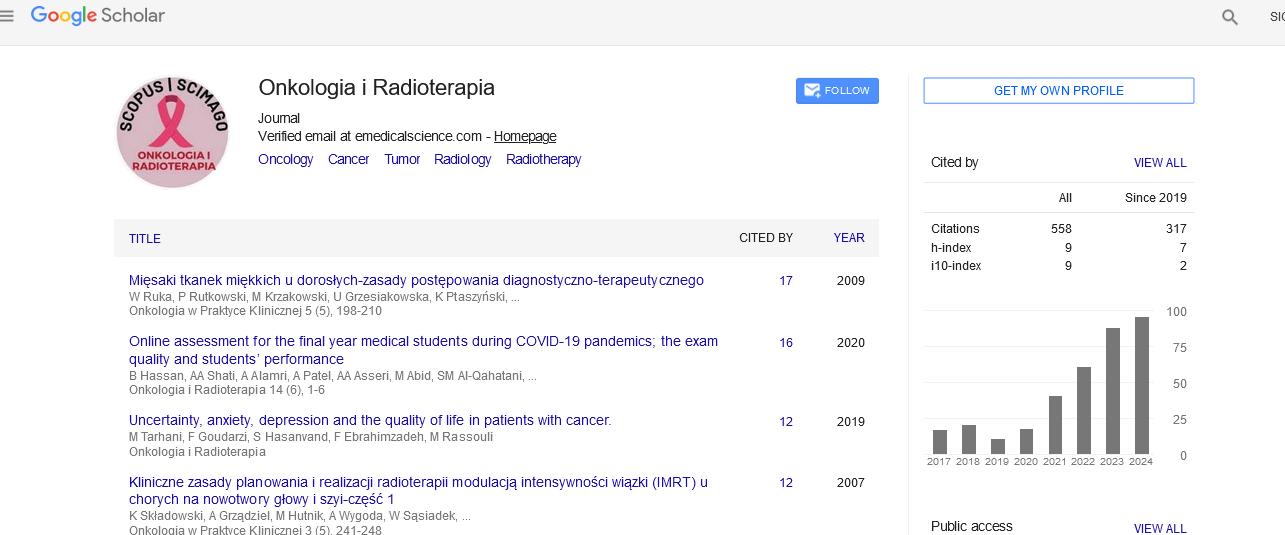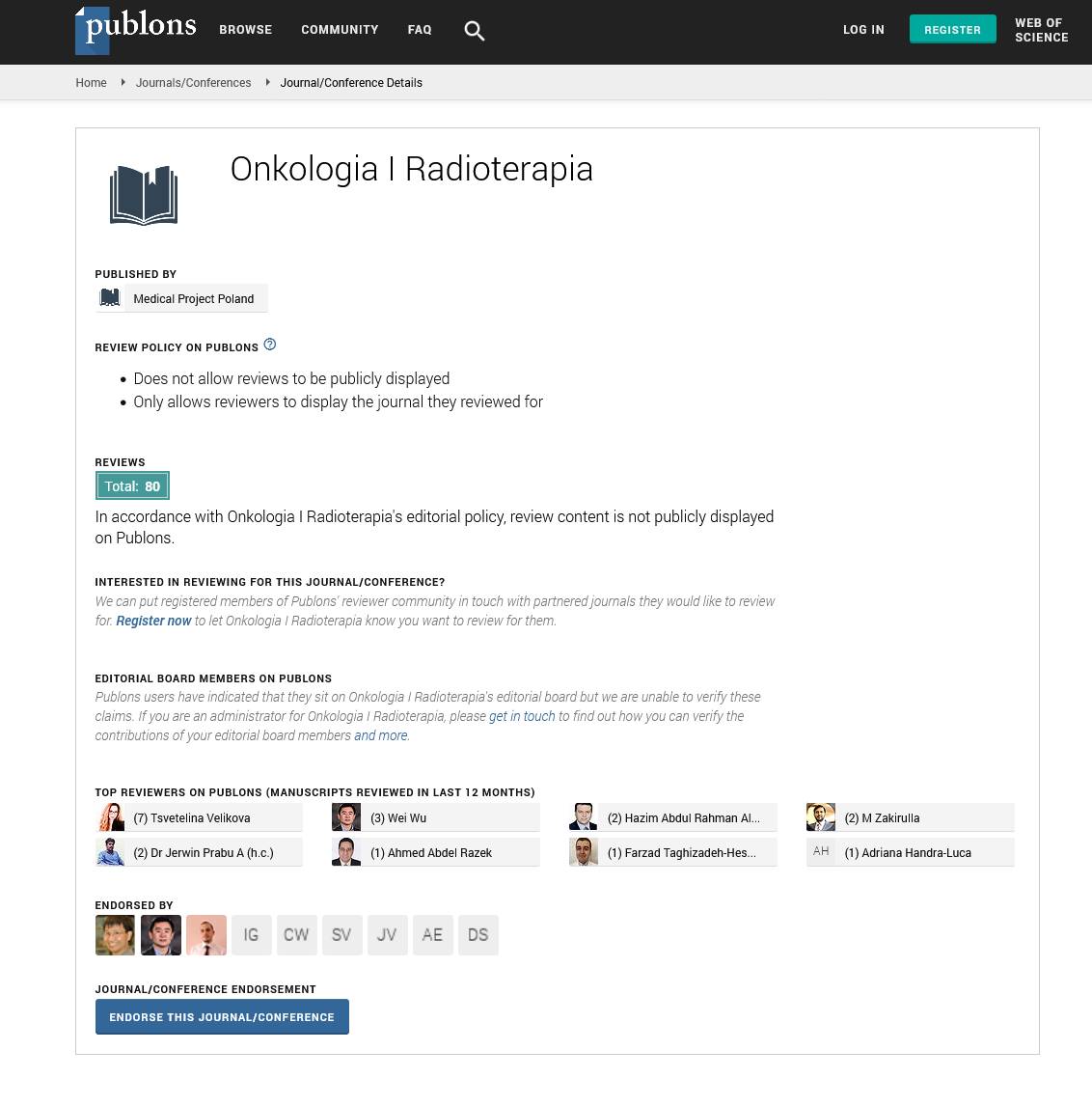Possibilities and limitations of left breast IMRT techniques in practice IMRT S&S versus VMAT
Abstract
Author(s): Rachid Errifai*, Siham Bouaouad and B.K. El gueddari
Introduction: The purpose of this manuscript is to compare dosimetry differences based on two types of radiotherapy plans for postoperative left breast cancer. In particular, based on a clinical dosimetric study, intensitymodulated radiation therapy (IMRT) and volumetric-modulated Arc Therapy (VMAT) plans were implemented in 10 cases of postoperative left breast cancer patients and nodes.
Material and Methods: In our study, the prescribed dose was 50 Gy to the target volume delivered in 25 fractions of 2 Gy. The dose objectives at the PTV (Planning Target Volume) and the OAR (Organs at Risk) are detailed in Table 1. The main objective was to respect a good coverage of the target volume (PTV). For the contralateral lung, contralateral breast, and heart, the objective was to achieve the lowest possible dose.
Results: For target volume coverage (PTV): Table 1 and Table 1 show that all the dosimetric criteria are met regardless of the technique. The PTV volume receiving at least 95% of the prescribed dose is lower than 95% with a major contribution of the VMAT technique compared to the S&S IMRT technique of 2.6%. The maximum dose received by the PTV is lower in VMAT than in S&S IMRT by 0.4%. For the SROs: the result is similar in both techniques, however a decrease of 1.7% of the dose received by the homolateral lung receiving at least 20 Gy is noted in favor of the S&S IMRT technique (Table 2). The dose to the heart is generally higher with VMAT, with a maximum difference of 22.2% for the heart volume receiving at least 10 Gy. Regarding treatment time, it is reduced from 11 min with S&S IMRT to 2 min with VMAT.
Conclusions: We have shown that for the treatment of breast cancer, the VMAT technique offers better dose conformation at the PTV and lower peak doses compared to S&S IMRT, For the homolateral lung, contralateral breast, and healthy tissues, VMAT allows a decrease of the doses received compared to IMRT S&S but this is accompanied by an increase of the dose received by the heart for the volume of the heart receiving at least 10 Gy, this is also accompanied by a very significant reduction of the treatment time in favor of the VMAT technique.
Haberler
Haberler
Haberler
Haberler
Haberler
Haberler
Haberler
Haberler
Haberler
Haberler
Haberler
Haberler
Haberler
Haberler
Haberler
Haberler
Haberler
Haberler
Haberler
Haberler
Haberler
Haberler
Haberler
Haberler
Haberler
Haberler
Haberler
Haberler
Haberler
Haberler
Haberler
Haberler
Haberler
Haberler
Haberler
Haberler
Haberler
Haberler
Haberler
Haberler
Haberler
Haberler
Haberler
Haberler
Haberler
Haberler
Haberler
Haberler
Haberler
Share this article


Editors List
-
RAOUi Yasser
Senior Medical Physicist
-
Ahmed Hussien Alshewered
University of Basrah College of Medicine, Iraq
-
Sudhakar Tummala
Department of Electronics and Communication Engineering SRM University – AP, Andhra Pradesh
-
Alphonse Laya
Supervisor of Biochemistry Lab and PhD. students of Faculty of Science, Department of Chemistry and Department of Chemis
-
Fava Maria Giovanna
Google Scholar citation report
Citations : 558
Onkologia i Radioterapia received 558 citations as per Google Scholar report
Onkologia i Radioterapia peer review process verified at publons
Indexed In
- Directory of Open Access Journals
- Scimago
- SCOPUS
- EBSCO A-Z
- MIAR
- Euro Pub
- Google Scholar
- Medical Project Poland
- PUBMED
- Cancer Index
- Gdansk University of Technology, Ministry Points 20

